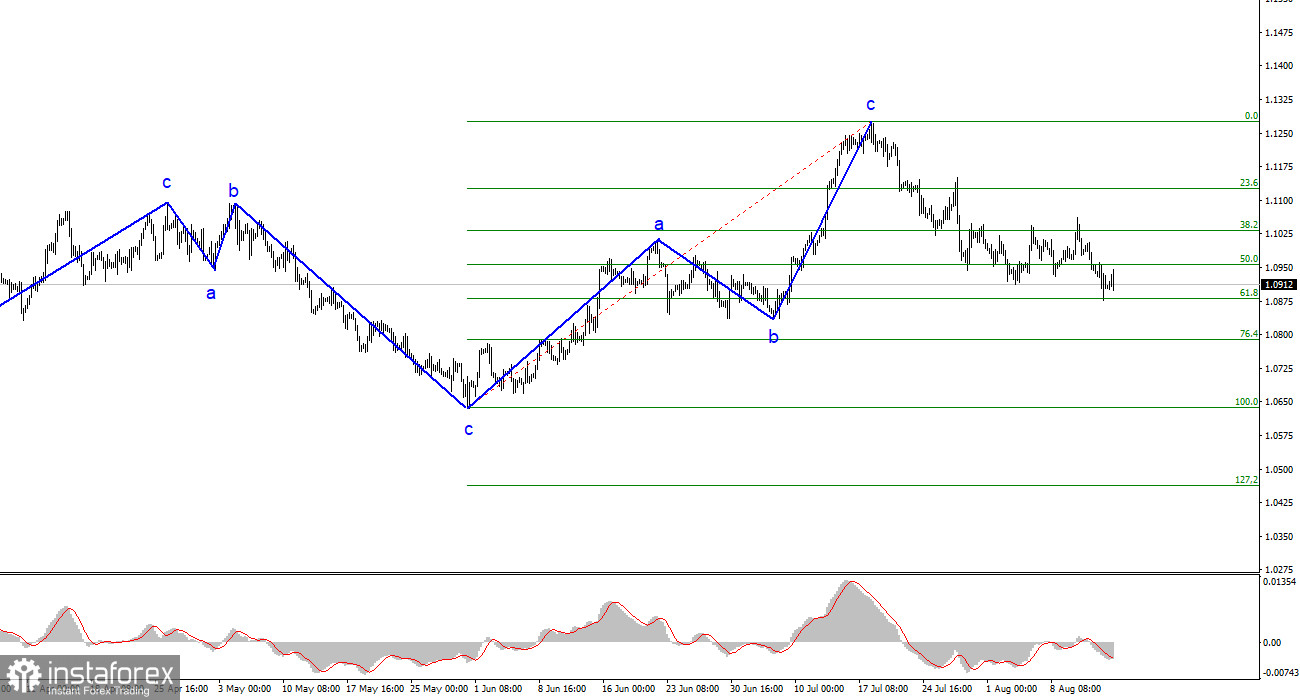The Bank of England has raised interest rates fourteen times in a row, but has failed to make significant progress in the fight against high inflation. Moreover, recent reports, some of which were released on Tuesday, show a deterioration in various economic processes in the UK. Let's discuss this in more detail.

Inflation in the UK initially rose more sharply than in the US or EU. The market probably believed that if inflation in the UK was higher, the BoE would raise interest rates longer and stronger. To some extent, this is true since its rate has risen more compared to the European Central Bank. But at the same time, the Federal Reserve's rate is even higher and has every chance of remaining so until both central banks begin easing policies. As we can see, the pound sterling has no advantage in this regard.
Unemployment in the UK has increased over the past year from 3.5% to 4.2%. In other words, it is indeed growing in the UK, unlike in the US, where the indicator remains near its 50-year lows. Wage growth rates have increased from 5.8% to 8.2% in the last five months alone. And the faster wages grow, the higher the chances of a new acceleration in inflation. The last five quarters of the UK's GDP ended with the following results: +0.1%, -0.1%, +0.1%, +0.1%, +0.2%. Let's compare them with the last five quarters in the US: -0.6%, +3.2%, +2.6%, +2.0%, +2.4%. The difference is obvious.
If the BoE's rate were now at 3% or 4%, meaning there was room for further rate hikes, the pound sterling could continue to rise based on everything mentioned above. However, the UK interest rate has risen to 5.25%, which is the highest level since 2008. Its peak was at 5.75% in 2008. Assuming that the rate will not exceed this value, the BoE will raise the rate two more times at most.
Theoretically, the central bank could increase it to 6.5-7%, which is clearly required by the current inflation rate, but for now I don't believe this will happen, and the market is unlikely to put such a scenario into prices. Therefore, monetary tightening in the UK is coming to an end, as it is in the US. America has almost achieved its target, and its economy has hardly suffered. The UK cannot boast of the same. I believe that demand for the pound will only decrease.

Based on the conducted analysis, I came to the conclusion that the upward wave pattern is complete. I still consider targets around 1.0500-1.0600 quite realistic, and with these targets in mind, I recommend selling the instrument. The a-b-c structure looks complete and convincing. Therefore, I continue to advise selling the instrument with targets located around the 1.0836 mark and even lower. I believe that we will continue to see a bearish trend.
The wave pattern of the GBP/USD pair suggests a decline. You could have opened short positions a few weeks ago, as I advised, and now traders can close them. The pair has reached the 1.2620 mark. There's a possibility that the current downward wave could end if it is wave d. In this case, wave 5 could start from the current levels. However, in my opinion, we are currently witnessing the construction of a corrective wave within a new bearish trend segment. If that's the case, the instrument will not rise further above the 1.2840 mark, and then the construction of a new downward wave will begin.
 English
English 
 Русский
Русский Bahasa Indonesia
Bahasa Indonesia Bahasa Malay
Bahasa Malay ไทย
ไทย Español
Español Deutsch
Deutsch Български
Български Français
Français Tiếng Việt
Tiếng Việt 中文
中文 বাংলা
বাংলা हिन्दी
हिन्दी Čeština
Čeština Українська
Українська Română
Română

